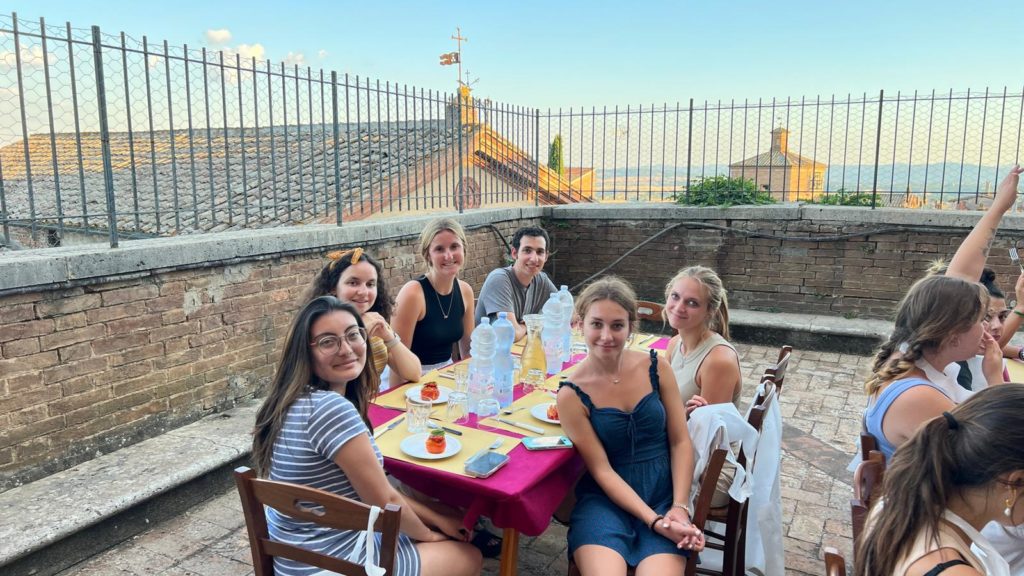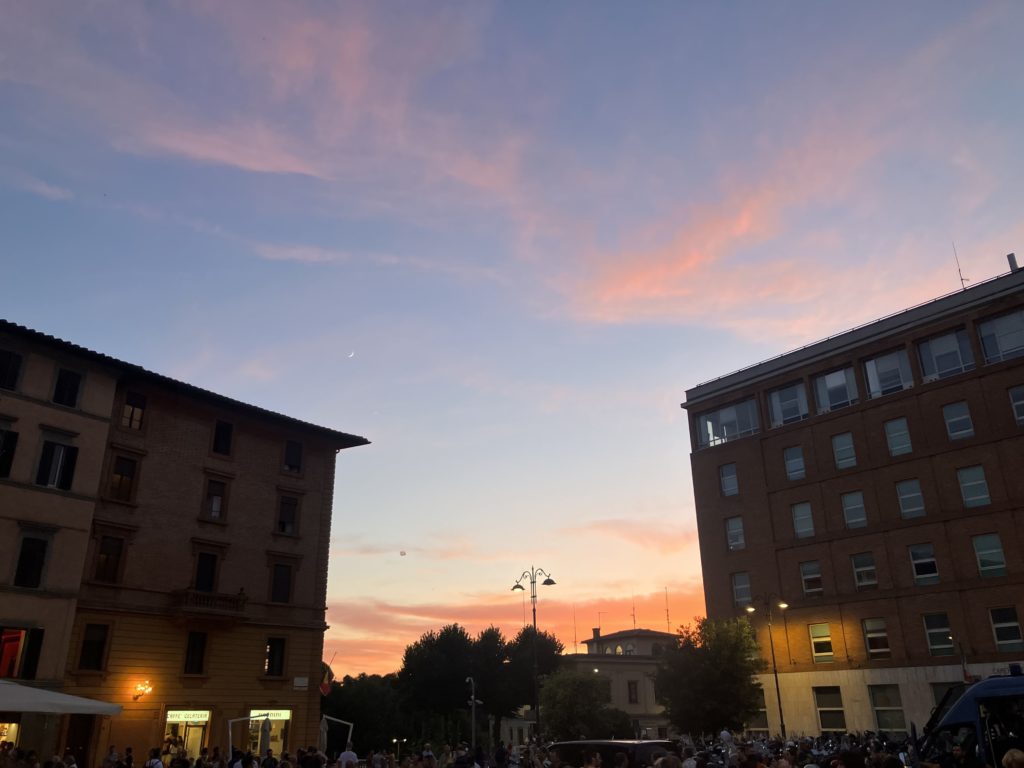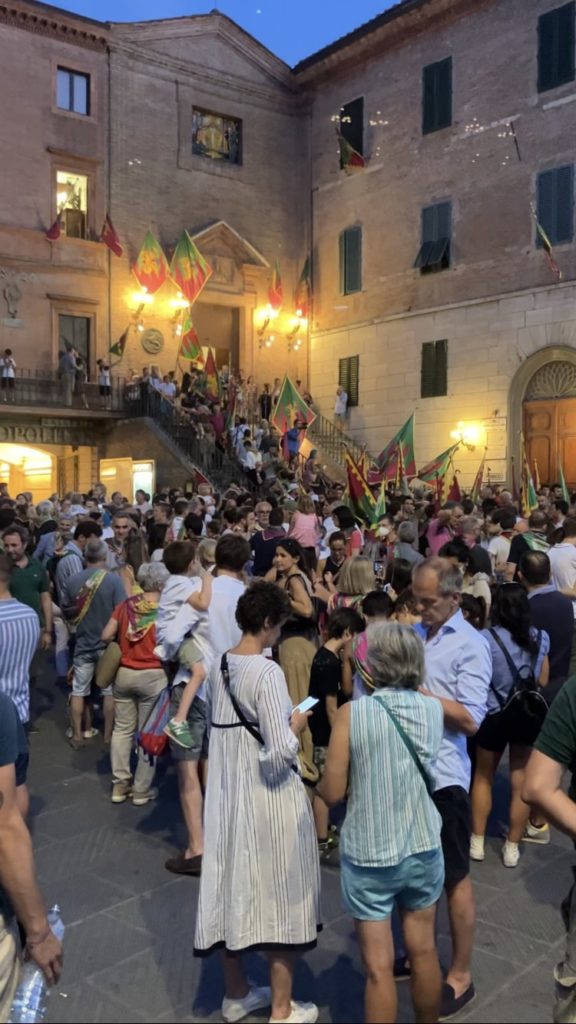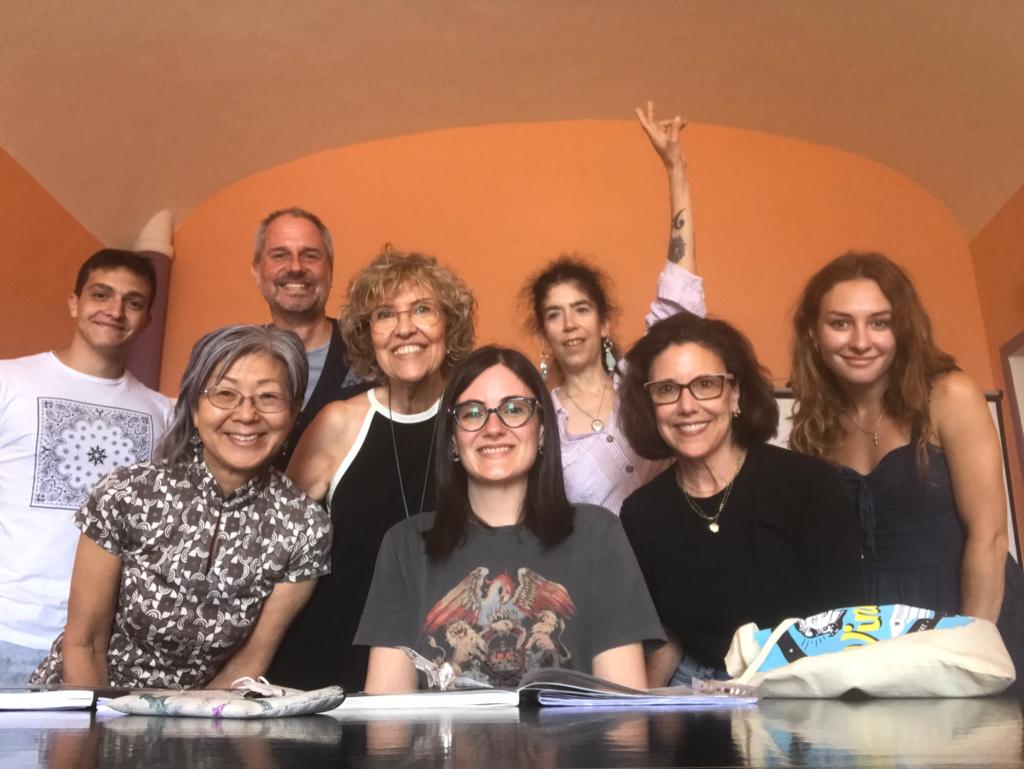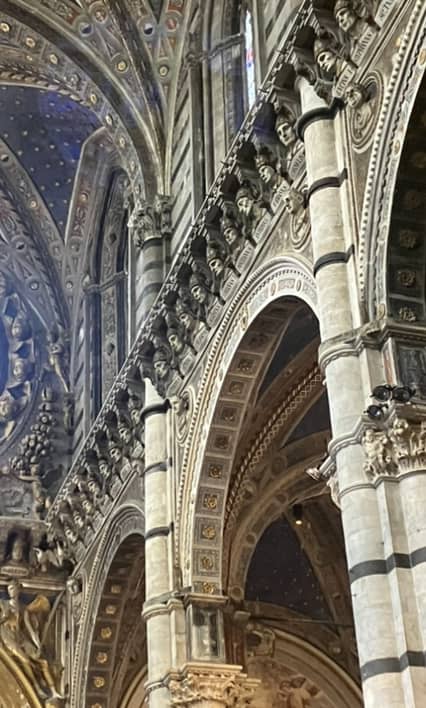Last summer, the Notre Dame School of Architecture sent me and my fifty-four classmates abroad to Italy. The intention was to supplement the learning of our third year in the program. The tradition of the architecture program is to send third-year students for one year to Rome, to enhance their learning of traditional architecture and urbanism. This, in my case, would have been the 2020-2021 academic year, which was affected by the pandemic. However, the School was adamant – this experience would be crucial for our learning as architecture students. As such, the program faculty and staff made an incredible and kind effort to teach us in Rome the summer of 2021. As such, my classmates and I were guided through nine weeks in Italy, expanding our understanding of history, urbanism, and architectural design. In my time there, my already-great passion for language learning took off, given that was my first experience living abroad. I had been studying Italian at the university for three years at that point, and I felt so fortunate to be able to practice using the language in an authentic environment. Simultaneously, I was in awe of the culture and history that surrounded me everyday.
On July 31, 2021, I was heartbroken to leave Italy. It did not feel that I had only spent nine weeks traveling, drawing, and painting, but that I had undergone a transformative experience that I wished to continue. With that, the first week of August I began thinking about how I could go back to Italy to take my learning of the language to the next level. I spoke with Professoressa Blad, and I was inspired to apply for the Summer Language Abroad grant. This was a once-in-a-lifetime opportunity: language learning has been one of my greatest sources of joy since a young age, and to be able to go into an immersive program and focus so deeply on my language development sounded like a dream. I was encouraged to apply to the program in Siena – la Scuola di Dante Alighieri – for the wonderful level of instruction and family-like attention and care of the faculty and staff. I became gradually more excited and was overcome with joy when the news came that I had been awarded the grant. The reality of the opportunity came when I completed my purchase of the round-trip airline tickets.
After four weeks spent in Rome studying and interning with my professor – again funded by Nanovic – I stepped on the train to go to Siena. I could not believe that I was getting closer and closer to beginning an immersive language program, and was immediately welcomed by the School along with five other Notre Dame students in a Welcome dinner. I witnessed very quickly the level of care given by the School, and came to see this more as the time in the program passed.
Every weekday, from 9:10am until 1:00pm, I was in language instruction. The beauty of the program was that students came into the School at different times and for different durations, and into different level courses, as it suited them. As a result, I met so many kind individuals from all over the world and of all ages. I was able to meet other eager language learners from Germany, Switzerland, France, Sweden, Japan, and Spain, to name just a few. I developed a friendship with my instructors, who came in with smiles on their faces and an openness to talk to us regarding whatever we were curious about or whatever we wanted to share – in Italian, of course. Sonia, a Sienese native, guided me through my first weeks of learning, and Bianca from Agrigento, Sicily led me through the last three weeks. At 10:50am, many of us from the School would head downstairs and reconvene at the Bar Al Solito Posto around the block, where Mattia would greet us with a big smile and serve us a cappuccino or espresso for those twenty minutes. Back in class, we frequently launched into very organic, enjoyable group conversations that allowed each student to piggy-back off of what someone else was saying and make their own contribution through thoughtful efforts to engage the Italian language.
What struck me in these language classes was that I did not feel so nervous to speak as I normally have in language courses in school. Interestingly enough, I think that the great variety in age and background made me feel more comfortable and at home, and as such, I would speak up and even launch into long explanations of my own thoughts and feelings. I want to bring this same comfort level back to campus when I enter the Primo Levi course in the fall. I cannot quite pinpoint why I get so nervous in language classes, even though I recognize we are all learners, and as such I hope I have moved past this fear and can apply newfound confidence to class participation! I discovered that the spontaneous conversation that came from different textbook topics and grammar lessons was where I felt most engaged, and I want to bring this spirit back to the classroom at Notre Dame.
Looking back on what I wrote on May 27, when I was in Rome and preparing to travel to Siena, it is incredible to see overlap in some themes. For instance, I write now about nervousness washing away in lessons while in Siena. And upon revisiting my pre-departure blog, I see that I hoped for this very thing to occur. This brings me joy to see that I have overcome something that I was concerned about just two months ago. Now the challenge I give to myself is to maintain this confidence moving forward. I will work to discipline myself in my continued use of the Italian language outside of the Primo Levi course. For instance, I want to maintain my new friendships from Siena and keep in touch on WhatsApp, actively practicing my more informal use of Italian. I also wish to call these friends once in a while, because the spoken language is always more of a challenge to me than the written one.
I wish to make time to read books in Italian and journal in Italian, too. Throughout this summer, I maintained a journal, which further enabled self-discovery. I advise future SLA recipients, and even just other students studying abroad to do this. Even more so, I suggest you do what I did: do not write in English. I wrote interchangeably in Spanish and Italian, and while this was largely for practice, I reaped another benefit as well. I found that thinking in another language unlocked different perspectives even within the confines of a personal notebook. It was incredible to reflect upon this as I wrote, and I want to make this a habit for all future travel. I should even do this back in the States: write outside of my native language of English, and see how it impacts my thinking and outlook. I propose the same challenge to all of you!
As another piece of advice, I would say: if you have any interest in language learning, please visit the Center for the Study of Languages and Cultures in Bond Hall. I work there as a language tutor of Spanish, and there are many passionate language peer tutors that would be happy to talk to you about opportunities such as these or help you practice your target language. I also advise you to talk to your language professors. Dr. Alessia Blad, both as Director of the CSLC and as one of my Italian culture professors, enthusiastically received millions of questions from me about how I could evolve as a language learner. She alongside Dr. Kathleen Boyle were both so supportive in my search for these opportunities, and were those who highly praised the program of Siena. Talk to the faculty at Notre Dame, because they want you to find these wonderful opportunities and are happy to share their own insights. Ask these questions, and you may find yourself on the language learning journey of your dreams. Now I walk away, eager to return, and I will make sure to do so.
Back in Siena, the variety in demographic among students in my language lessons was also so enriching both to the eager-to-learn atmosphere and to how much I learned about different cultures. Satomi shared so much about her life and experiences in Japan, which was very interesting. And each student touched my life in their own unique way. For instance, on Satomi’s last day of class, as we all spoke, she actively made origami for each of us. I still have mine, working hard to keep it intact during this final week in Rome and throughout my travel back to the States.
I also benefited from and was touched by the insights of individuals such as Volker, Catherine, and Claudia (all from Switzerland) and Virginia (from Spain) in their learning strategies and their life perspectives. Virginia and I often sat next to each other, and given her native language of Spanish and my good grasp of it, we would often swap notes to better understand certain vocabulary and grammar concepts in Italian that had a likeness to that of the former. Likewise, the three Swiss students inspired me with their learning as well, because given their residence in Switzerland, their exposure to the Italian language prior proved useful.
Gabe, or as we would call him in class, Gabriele, carried many of his own insights as well. A fellow Notre Dame student, and now a friend, is Sicilian, specifically of Trapani, and goes to Trapani every summer to be with all of his family. Given his extensive experience both there and in his community in Detroit, it was enjoyable to hear both his and Bianca’s (a native of Agrigento, Sicily) insights for a different culture in Italy and to hear how it shapes their perceptions.
Virginia and I now write to each other in Spanish to get to know each other better as well as help my own skill development in Spanish. It is wonderful getting book recommendations and insights into the Catalan language from a native of Barcelona! New friendships such as these are another wonderful consequence of my time in Siena. My instructor Bianca still keeps in touch with me and Gabe, allowing us both to practice our Italian and to stay up-to-date with what’s going on in her life.
Three afternoons every week, several of us would meet for class from 2:00 to 4:00pm for lessons with Luca Bonomi, the president of the school. He would teach us the culture and history of Siena, and enrich his PowerPoints with his tours throughout the city and even two day trips to Florence. As if I did not already feel at home with the kind gestures of the language instructors and of the School staff, Luca enhanced this family-like atmosphere even further for all of us. He was eager to share his love for Siena, and in turn, I, too, came to love Siena. He made sure at all times that we were engaged and felt comfortable with both our lessons and our living situations.
The School also made a diligent effort to lead us through the weeks preceding the Palio of July 2nd. This event was much more than a ninety-second horse race. I caught a glimpse of the rich cultural and historical atmosphere that inevitably engulfs the city each Palio “season”, and I felt blessed to do so in a way that a brief vacation in Siena would not accomplish. I admired the system of the contrade in Siena, something that is difficult to capture with words and more something that is felt. The rich sense of community that can be identified in Siena owes a great deal to these contrade, and also contributed to how light-hearted and very safe I felt in the city at all times.
Something I also noted in my pre-departure blog as a goal of mine, and something that I found to be prevalent in my Siena experience, was the impact of urbanism and architecture on everyday life. The movement through streets that were narrow, but not claustrophobic and in fact homey, was formative to my daily experience of Siena. I saw these same pedestrian-dominated streets be filled with enthusiastic Sienese people as various contrade marched through these streets anticipating the Palio. And I cannot stress enough how positive the virtual absence of cars in the historic center of Siena was. Furthermore, the change of elevation and the curving of streets rendered me constantly engaged as a pedestrian on the streets. I was always excited to see what was around a given corner. I was also in love with the architectural character of Siena. Luca Bonomi told us in one of our early culture class tours of the city that Siena is a UNESCO World Heritage site, and that is why the medieval character of the city is perfectly preserved. I will declare that I am a traditionalist when it comes to architecture and urbanism, so the retention of this history is something very moving to me. I genuinely believe in its positive impacts on the preservation of cultural heritage in Siena.
On any given day in those five weeks in Siena, a passerby had a high chance of passing me in Piazza del Campo, the central part of the city. It was a common occurrence that I would bring a journal, sketchbook, a pair of earbuds, or just myself, and sit on the ground in the center of the piazza. I would let the simultaneously calm and vibrant feeling in the Campo air wash over me as I sat there overhearing bits of Italian – trying to imagine the context of different conversations in passing – or observing the movement of people in and out of the space. This ritual came to be somewhat of a religious experience for me, in that it was my default way to pass time outside of class. Chances are, when my roommates asked me where I was going on the way out of the apartment, I would respond “Campo.” This was all that needed to be said, because they all knew how much joy it brought me simply to exist in the Piazza del Campo for hours on end. At one point, I extended this routine to the beautiful steps behind the Baptistery of Siena. It simultaneously had great activity as people passed back and forth and carried the promise of shade in the dry heat of Siena.
My attitude towards language learning during my time in Siena was enriched, and I hope to go back to the School later down the road. It was very difficult when the time came to leave Siena, and it certainly kept a piece of my heart, ensuring I will go back. The wholly positive experience in Siena ignited my passion further to speak, write, listen, and read in Italian. Now back in Rome for a short while longer, I have taken the opportunity to speak and write occasionally in Italian to my professor, and I am so grateful for the courage I developed in Siena in order to do this. I would strongly encourage all those who are moved by the beauty of language and culture to seek out a program like this, if not this very program itself. And I cannot stress enough how special of a place Siena is. Even as I write this, I think back wistfully on just a few weeks ago when I was there, feeling right at home. But this connection is one I feel blessed to have, because that means I will go back.
Luca and Guido, in our last culture lesson, gave moving speeches about how Siena was our home, that we were leaving Siena, but that we would come back. Some of these beautiful words emphasized that all of them at the Dante Alighieri of Siena were our family, and not just for our time in class, but from now on. The community and care shown in Siena went well beyond what I ever could have asked for, and being awarded an SLA grant to undergo this transformative, family-like experience is something that will never go unappreciated in my memory. Luca, quoting a past student, said, “Rome is Rome, but Siena is home.” I, having lived in both of these incredible cities, was deeply touched by this as well.
In my final hour in Siena, I once again found myself sitting on a stoop in Campo and gazing out on the life before me. I know Campo awaits my return. Not long from now, I will once again sit in the embrace of that wonderful space.

